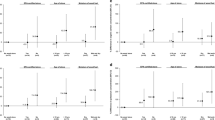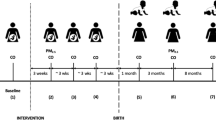Abstract
Introduction
Household air pollution (HAP) is poorly characterized in low-income urban Indian communities.
Materials and methods
A questionnaire assessing sources of HAP and 24 h household concentrations of particulate matter less than 2.5 microns in diameter (PM2.5) were collected in a sample of low-income homes in Pune, India.
Results
In 166 homes, the median 24 h average concentration of PM2.5 was 167 μg/m3 (IQR: 106–294). Although kerosene and wood use were highly prevalent (22% and 25% of homes, respectively), primarily as secondary fuel sources, high PM2.5 concentrations were also found in 95 (57%) homes reporting LPG use alone (mean 141 μg/m3; IQR: 92–209). In adjusted linear regression, log PM2.5 concentration was positively associated with wood cooking fuel (GMR 1.5, 95% CI: 1.1–2.0), mosquito coils (GMR 1.5, 95% CI: 1.1–2.1), and winter season (GMR 1.7, 95% CI: 1.4–2.2). Households in the highest quartile of exposure were positively associated with wood cooking fuel (OR 1.3, 95% CI: 1.1–1.5), incense (OR 1.1, 95% CI: 1.0–1.3), mosquito coils (OR 1.3, 95% CI: 1.1–1.6), and winter season (OR 1.2, 95% CI: 1.1–1.4).
Discussion
We observed high concentrations of PM2.5 and identified associated determinants in urban Indian homes.
This is a preview of subscription content, access via your institution
Access options
Subscribe to this journal
Receive 6 print issues and online access
$259.00 per year
only $43.17 per issue
Buy this article
- Purchase on Springer Link
- Instant access to full article PDF
Prices may be subject to local taxes which are calculated during checkout



Similar content being viewed by others
References
GBD 2015 Risk Factors Collaborators. Global, regional, and national comparative risk assessment of 79 behavioural, environmental and occupational, and metabolic risks or clusters of risks, 1990-2015: a systematic analysis for the Global Burden of Disease Study 2015. Lancet. 2016;388:1659–724.
Torres-Duque C, Maldonado D, Perez-Padilla R, Ezzati M, Viegi G. Biomass fuels and respiratory diseases: a review of the evidence. Proc Am Thorac Soc. 2008;5:577–90.
Clark ML, Peel JL, Balakrishnan K, Breysse PN, Chillrud SN, Naeher LP, et al. Health and household air pollution from solid fuel use: the need for improved exposure assessment. Environ Health Perspect. 2013;121:1120–8.
World Health Organization. Global database of household measurements 2015. http://www.who.int/indoorair/health_impacts/databases_iap/en/.
Clark ML, Reynolds SJ, Burch JB, Conway S, Bachand AM, Peel JL. Indoor air pollution, cookstove quality, and housing characteristics in two Honduran communities. Environ Res. 2010;110:12–8.
Klasen E, Miranda JJ, Khatry S, Menya D, Gilman RH, Tielsch JM, et al. Feasibility intervention trial of two types of improved cookstoves in three resource-limited settings: study protocol for a randomized controlled trial. Trials. 2013;14:327.
McCracken JP, Schwartz J, Diaz A, Bruce N, Smith KR. Longitudinal relationship between personal CO and personal PM2.5 among women cooking with woodfired cookstoves in Guatemala. PLoS ONE. 2013;8:e55670.
Balakrishnan K, Ramaswamy P, Sambandam S, Thangavel G, Ghosh S, Johnson P, et al. Air pollution from household solid fuel combustion in India: an overview of exposure and health related information to inform health research priorities. Global Health Action. 2011;4; doi: 10.3402/gha.v4i0.5638. E-pub 4 October 2011.
Yamamoto SS, Louis VR, Sie A, Sauerborn R. Biomass smoke in Burkina Faso: what is the relationship between particulate matter, carbon monoxide, and kitchen characteristics? Environ Sci Pollut Res Int. 2014;21:2581–91.
Akunne AF, Louis VR, Sanon M, Sauerborn R. Biomass solid fuel and acute respiratory infections: the ventilation factor. Int J Hyg Environ Health. 2006;209:445–50.
Jiang R, Bell ML. A comparison of particulate matter from biomass-burning rural and non-biomass-burning urban households in northeastern China. Environ Health Perspect. 2008;116:907–14.
Zhou Z, Dionisio KL, Arku RE, Quaye A, Hughes AF, Vallarino J, et al. Household and community poverty, biomass use, and air pollution in Accra, Ghana. Proc Natl Acad Sci USA. 2011;108:11028–33.
Kulshreshtha P, Khare M, Seetharaman P. Indoor air quality assessment in and around urban slums of Delhi city, India. Indoor Air. 2008;18:488–98.
Baxter LK, Clougherty JE, Laden F, Levy JI. Predictors of concentrations of nitrogen dioxide, fine particulate matter, and particle constituents inside of lower socioeconomic status urban homes. J Expo Sci Environ Epidemiol. 2007;17:433–44.
St Helen G, Aguilar-Villalobos M, Adetona O, Cassidy B, Bayer CW, Hendry R, et al. Exposure of pregnant women to cookstove-related household air pollution in urban and periurban Trujillo, Peru. Arch Environ Occup Health. 2015;70:10–8.
Salje H, Gurley ES, Homaira N, Ram PK, Haque R, Petri W, et al. Impact of neighborhood biomass cooking patterns on episodic high indoor particulate matter concentrations in clean fuel homes in Dhaka, Bangladesh. Indoor Air. 2013;24:213–20.
Gurley ES, Salje H, Homaira N, Ram PK, Haque R, Petri WA Jr, et al. Seasonal concentrations and determinants of indoor particulate matter in a low-income community in Dhaka, Bangladesh. Environ Res. 2013;121:11–6.
Saksena S, Singh PB, Prasad RK, Prasad R, Malhotra P, Joshi V, et al. Exposure of infants to outdoor and indoor air pollution in low-income urban areas - a case study of Delhi. J Expo Anal Environ Epidemiol. 2003;13:219–30.
Office of the Registrar General & Census Commissioner GoI. Census of India 2011 New Delhi 2011. http://www.censusindia.gov.in/default.aspx.
Collector Office of Pune. District at a Glance 2017. http://pune.nic.in/content/punecity/aboutpune.aspx.
Chakrabarti B, Fine PM, Delfino R, Sioutas C. Performance evaluation of the active-flow personal DataRAM PM2.5 mass monitor (Thermo Anderson pDR-1200) designed for continuous personal exposure measurements. Atmos Environ. 2004;38:3329–40.
World Health Organization. WHO Air quality guidelines for particulate matter, ozone, nitrogen dioxide and sulfur dioxide. Global update 2005. Summary of risk assessment. Geneva; 2005.
Shen G, Gaddam CK, Ebersviller SM, Vander Wal RL, Williams C, Faircloth JW, et al. A laboratory comparison of emission factors, number size distributions and morphology of ultrafine particles from eleven different household cookstove-fuel systems. Environ Sci Technol. 2017;51:6522–32.
Salvi D, Limaye S, Muralidharan V, Londhe J, Madas S, Juvekar S, et al. Indoor particulate matter less than 2.5 microns in mean aerodynamic diameter (PM2.5) and Carbon Monoxide (CO) levels during the burning of mosquito coils and their association with respiratory health. Chest. 2015;149:459–66.
Liu W, Zhang J, Hashim JH, Jalaludin J, Hashim Z, Goldstein BD. Mosquito coil emissions and health implications. Environ Health Perspect. 2003;111:1454–60.
Maharashtra Pollution Control Board. Air Quality - Ambient Air Wuality Monitored at Pune. http://mpcb.gov.in/envtdata/demoPage1.php.
Lawrence AJ, Masih A, Taneja A. Indoor/outdoor relationships of carbon monoxide and oxides of nitrogen in domestic homes with roadside, urban and rural locations in a central Indian region. Indoor Air. 2005;15:76–82.
Satsangi PG, Yadav S, Pipal AS, Kumbhar N. Characteristics of trace metals in fine (PM2.5) and inhalable (PM10) particles and its health risk assessment along with in-silico approach in indoor environment of India. Atmos Environ. 2014;92:384–93.
Lawrence A, Fatima N. Urban air pollution & its assessment in Lucknow City--the second largest city of North India. Sci Total Environ. 2014;488-489:447–55.
Colbeck I, Nasir ZA, Ali Z. Characteristics of indoor/outdoor particulate pollution in urban and rural residential environment of Pakistan. Indoor Air. 2010;20:40–51.
Acknowledgements
The authors would like to thank the study participants and their families for volunteering their time and opening their homes to us. Research reported in this manuscript was supported by the National Institute of Allergy and Infectious Diseases of the National Institutes of Health under award number R01AI097494, and by the Fogarty International Center, Office of AIDS Research, National Cancer Center, National Heart, Blood, and Lung Institute, and the NIH office of Research for Women’s Health through the Fogarty Global Health Fellows Program Consortium comprised of the University of North Carolina, Johns Hopkins, Morehouse and Tulane under award number R25TW009340. The content is solely the responsibility of the authors and does not necessarily represent the official views of the National Institutes of Health. Data in this manuscript were also collected as part of the Regional Prospective Observational Research for Tuberculosis (RePORT) India Consortium. This project has been funded in whole or in part with Federal funds from the Government of India’s (GOI) Department of Biotechnology (DBT), the Indian Council of Medical Research (ICMR), the United States National Institutes of Health (NIH), National Institute of Allergy and Infectious Diseases (NIAID), Office of AIDS Research (OAR), and distributed in part by CRDF Global. The contents of this publication are solely the responsibility of the authors and do not represent the official views of the DBT, the ICMR, the NIH, or CRDF Global. Any mention of trade names, commercial projects, or organizations does not imply endorsement by any of the sponsoring organizations. Research reported in this manuscript was also supported by the Ujala Foundation and the Gilead Foundation. Dr. Aarti Kinikar was supported by the Fogarty International Center BJGMC JHU HIV TB Program D43TW009574.
Author information
Authors and Affiliations
Corresponding author
Ethics declarations
Conflict of interest
The authors declare that they have no conflict of interest.
Rights and permissions
About this article
Cite this article
Elf, J.L., Kinikar, A., Khadse, S. et al. Sources of household air pollution and their association with fine particulate matter in low-income urban homes in India. J Expo Sci Environ Epidemiol 28, 400–410 (2018). https://doi.org/10.1038/s41370-018-0024-2
Received:
Revised:
Accepted:
Published:
Issue Date:
DOI: https://doi.org/10.1038/s41370-018-0024-2
Key Words
This article is cited by
-
Indoor air pollution and cognitive function among older adults in India: a multiple mediation approach through depression and sleep disorders
BMC Geriatrics (2024)
-
Methods in Public Health Environmental Justice Research: a Scoping Review from 2018 to 2021
Current Environmental Health Reports (2023)
-
Assessment of indoor air quality and housing, household and health characteristics in densely populated urban slums
Environment, Development and Sustainability (2022)
-
Tuberculosis (TB) Aftermath: study protocol for a hybrid type I effectiveness-implementation non-inferiority randomized trial in India comparing two active case finding (ACF) strategies among individuals treated for TB and their household contacts
Trials (2022)
-
Estimation of particulate matter (PM2.5, PM10) concentration and its variation over urban sites in Bangladesh
SN Applied Sciences (2020)



